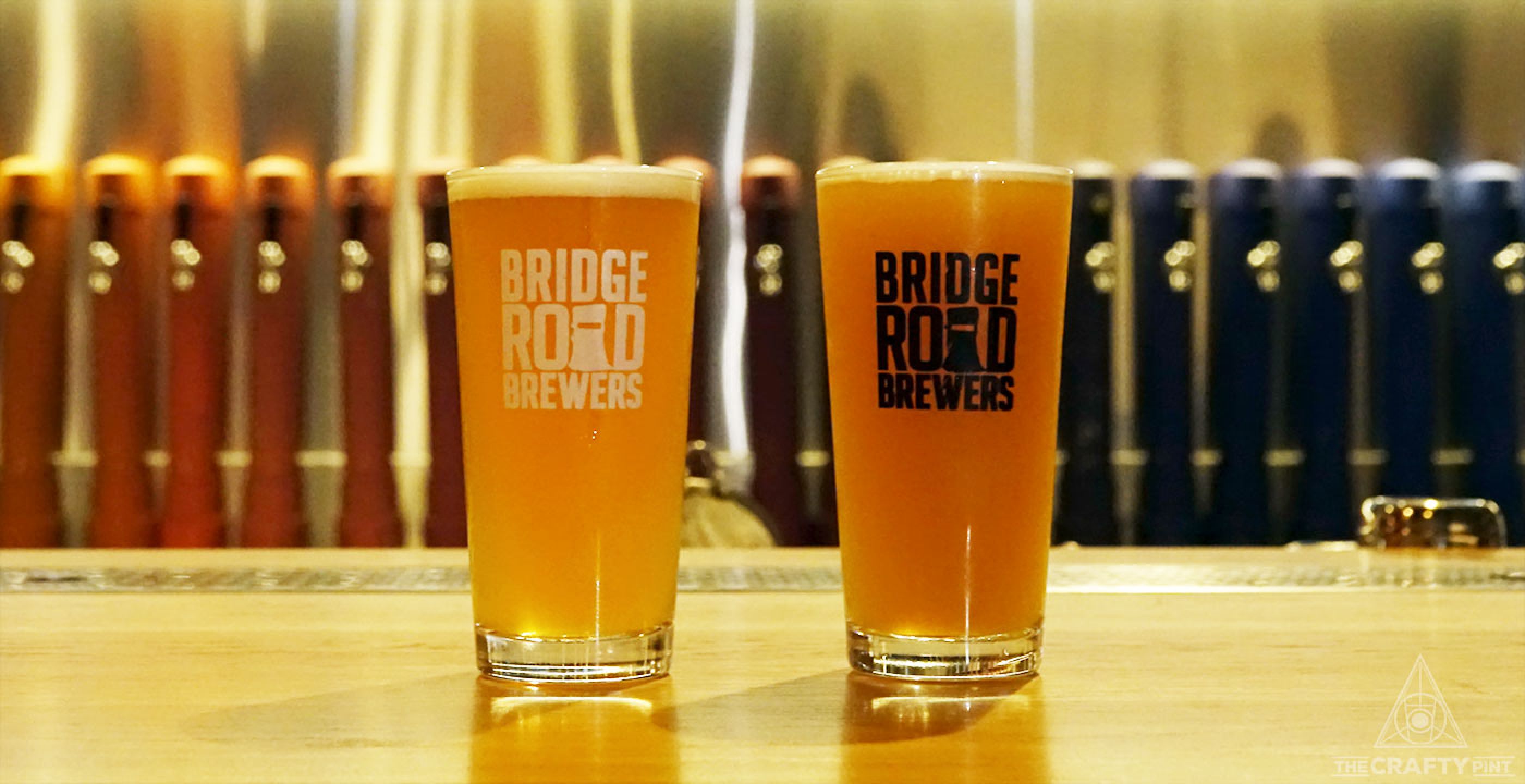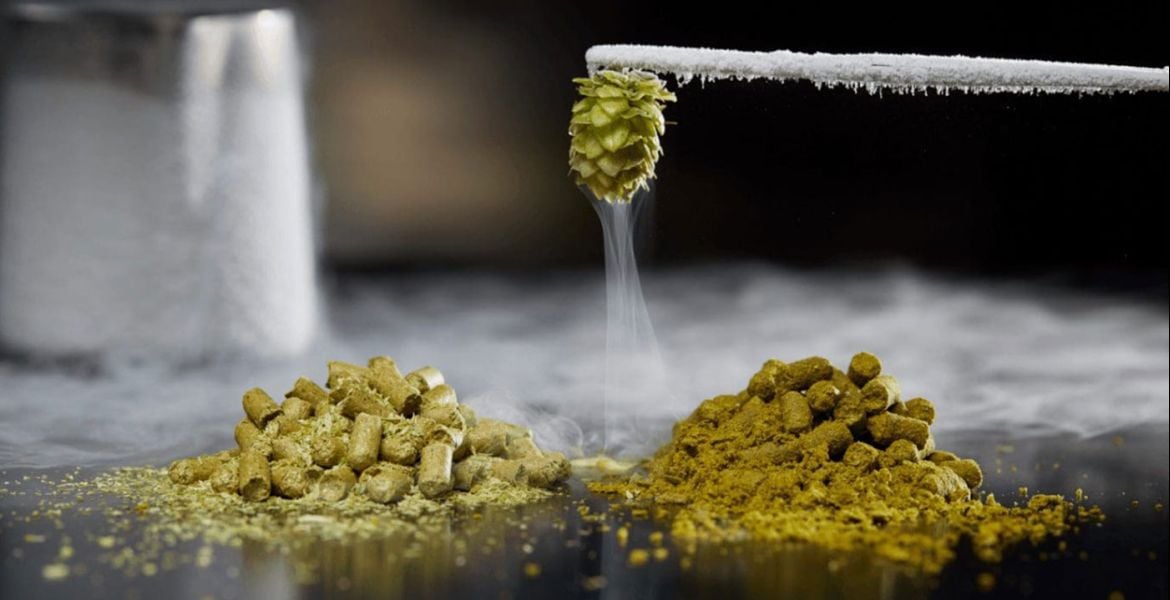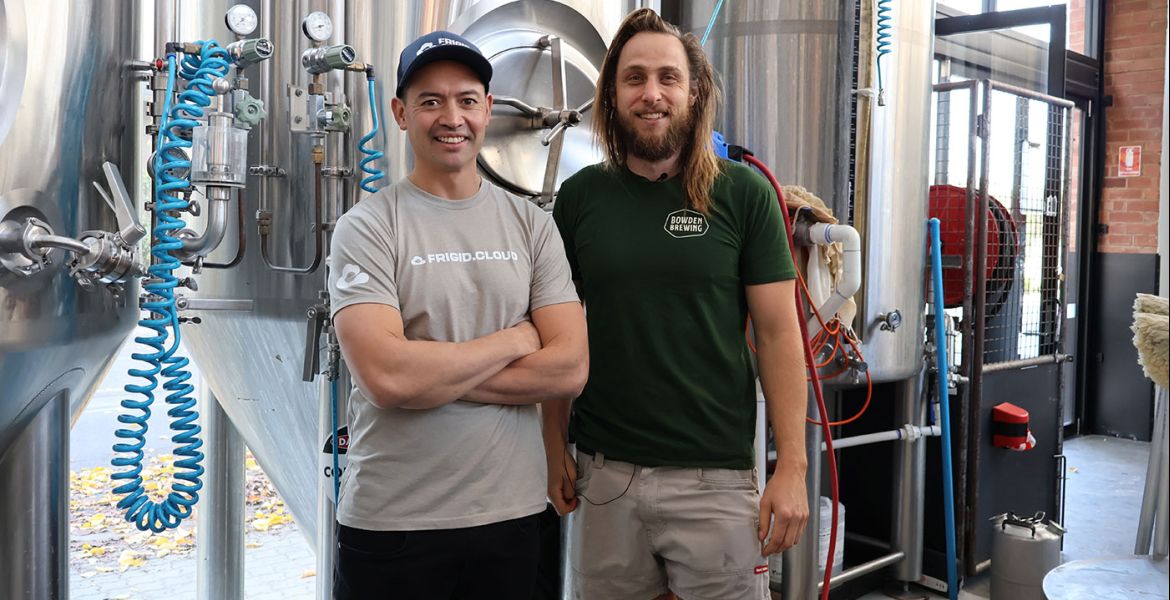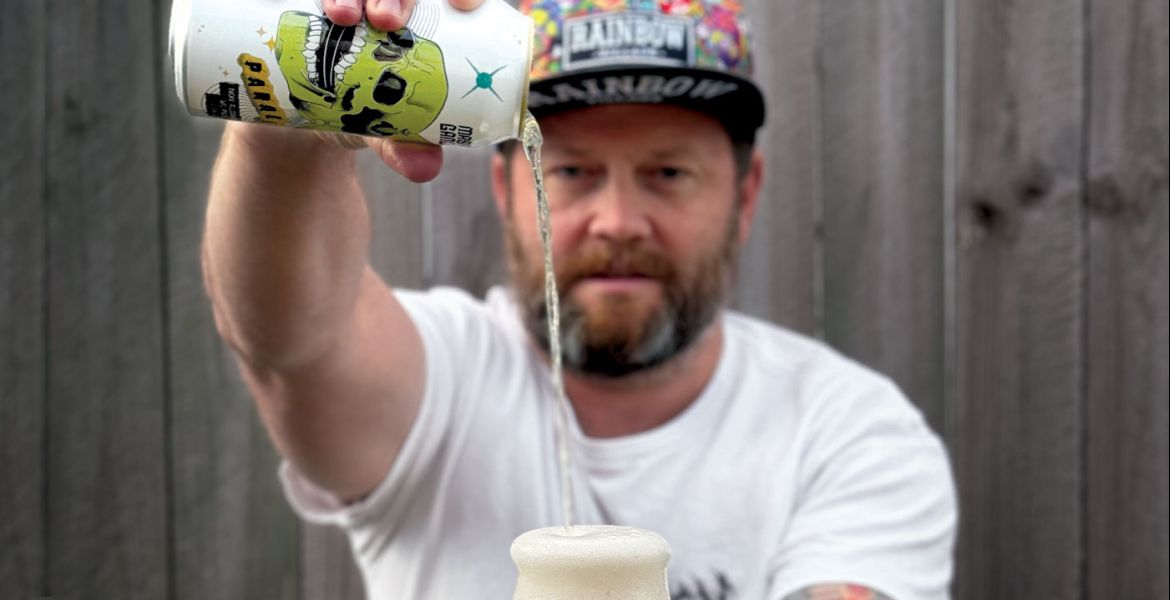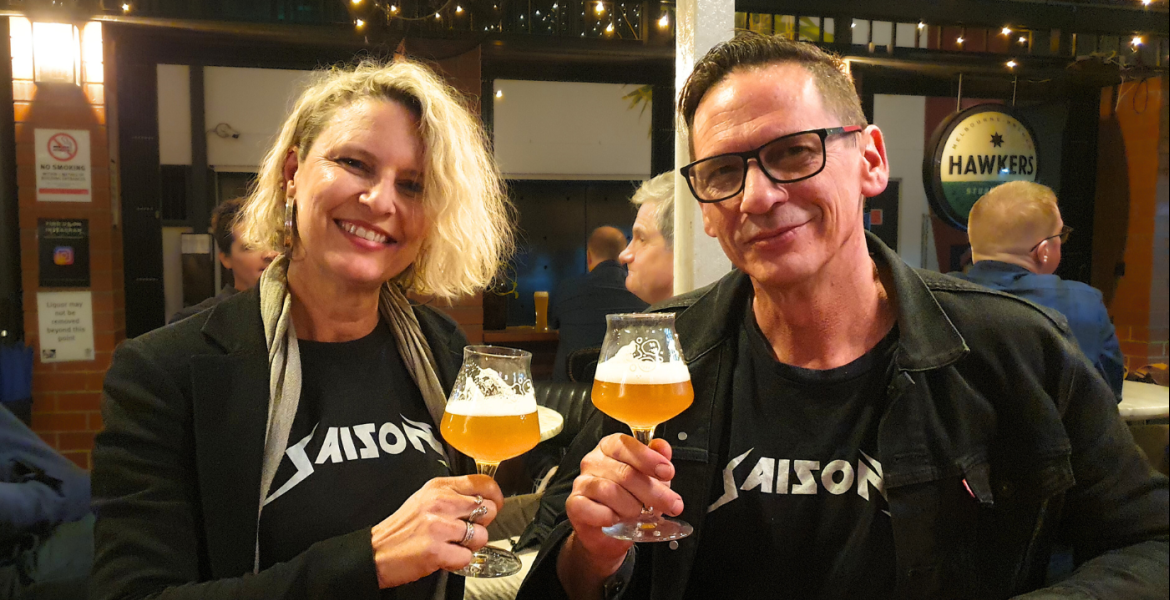Whenever a new hop variety appears, there's often a ripple of excitement through the craft beer world – and, most likely, a flood of new IPAs hitting the market. It's an opportunity to develop new recipes, play with new flavours, and – perhaps most importantly if the grower has nailed the name – unearth new puns to splash on tour cans.
Long before any new hop has been named, however, hop growers will have spent many years in development, cross-breeding existing varieties, killing off the multitudes that don't show enough promise, and hoping some of those in which they've put their faith will shine in time.
It’s a lengthy process we've explored before – most recently when HPA released Eclipse, which brewers had previously played with under its pre-commercial release name HPA-016. But what about beer's other ingredients? When you hear about the appearance of a new yeast strain, just what is the process involved there?
In June, brewers across the planet got their hands a new dry yeast from Lallemand: LalBrew Pomona. It was designed specifically for brewing modern, heavily-hopped IPAs, particularly hazy and New England IPAs, and we figured its arrival was an ideal opportunity to learn more about how the ingredient that brings beer to life comes, well, to life.
Starting at the end, Pomona's name stems from the Greek goddess of fruit trees, orchards and gardens thanks to its penchant for producing juicy, tropical fruit characters. That said, while its present comes with echoes of Ancient Greece, Pomona’s origins can instead be traced to Canada and Escarpment Laboratories.
It's not the only strain they've developed for brewers of hazy styles, as it's an area of brewing that the operation's co-founder Richard Priess believes isn’t just significant but is also unique, not least thanks to one of the beer world's favourite technical terms of recent times: biotransformation.
“We’ve developed a number of strains because it’s a category of beer that’s so popular and because I think it’s a category that does really need a new yeast,” he told The Crafty Pint.
“Because these styles are so popular, we’re hoping brewers can brew more distinct, more unique beers with Pomona.”

Escarpment’s own origin story mirrors that of many in the beer industry, coming about through good friends – Angus Ross, Nate Ferguson and Richard – with a shared passion for craft beer. Their point of difference, however, was that they connected while working in microbiology.
“We all met in the lab at the University of Guelph here in Canada,” Richard says. “This was in 2014 when craft beer was really starting to take off in Canada and there was this explosion of new craft breweries happening at the time.
“So, I’d like to think it was strategic, but it was just the right place at the right time.”
They started off providing Canadian brewers with locally-produced liquid yeast – something that continues to be a central part of their business today – but later began to create yeast strains of their own in order to give brewers more tools with which to work.
Their approach caught the eye of Lallemand, also based in Canada but with a global reach. The pair's first partnership was the release of Escarpment Laboratories House Ale in dried form.
As for how they came to work together on Pomona, Richard says: “They were looking for a new IPA strain so they got really interested.”
Why Create A New Yeast Strain?

New yeasts can make their way into brewers' hands through a variety of measures. In the States, there has been plenty of coverage around genetically-modified (GMO) strains designed to create specific characteristics in beer, but Australia’s strict biosecurity measures mean GMO yeasts can’t be used here.
There are varieties that might have been in relatively common used in parts of the world before being commercialised across the world, such as kveik, others have been revived via stored archives, but, in the case of Escarpment Laboratories, their approach is based in breeding.
Despite being a single-celled organism, when it comes to developing new types of yeast, the process isn't all that distinct from any other kind of breeding, with the offspring picking up traits from both parents.
“It’s similar to breeding in a lot of other organisms, except you don’t have sexes, you have what they call mating types,” Richard says. ”You don’t have a male or female yeast, you have an a and an Alpha* but, functionally, it’s the same idea: you need an a and an Alpha to mate.”
There are two main ways to breed yeasts, he says. The most common is spore-to-spore mating: scientists “starve” the yeast, which causes a survival instinct to kick in that allows them to mate.
“You actually force the yeast to sporulate, which is basically the state where it’s ready to mate,” he says. “As opposed to humans and plants, you have to starve yeast to get them ready to mate; it’s basically a last ditch effort to survive.
“You use tools and technology to break apart a bunch of yeast spores and you can actually pick those up with a really fine needle and put them on a grid and stick them together. You can basically force two spores to mate with each other to create a new hybrid.”
While spore-to-spore mating works well, when it comes to beer yeast it’s quite a challenge; due to the sterile the sterile nature of beer yeasts, they don’t typically form spores.
“It makes it really hard to breed those because then you’re searching for a needle in a haystack,” he says.
“So there’s also a second method in mating called rare mating. It’s in the name: you’re relying on rare instances of mating viability. In that case, you’re basically mixing two yeast strains in a test tube and then forcing them to sporulate.”
It’s a more labour intensive method – one that can be done in a test tube – and is the method they used for Pomona. Rather than looking for a needle in a haystack, the task is to set the right conditions, or right mood, to allow your chosen yeasts to get it on and create hybrid strains.
“You basically have to create two parents that each have a fatal flaw in terms of what kind of amino acids they can make,” he says. “They did the same thing in Jurassic Park.**
“You create two different strains, each with its own nutritional deficiency, and then you put them in the conditions where they sporulate.”***
However, while rare mating does rely on a rare likelihood, it is predictable.
“It’s a really effective method for beer yeast," he says, "because you don’t have to search for a needle in a haystack, you just have to rely on that one-in-50,000 or one-in-100,000 chance that the yeast can sporulate and mate.”
Choosing The Right Parents

As with any offspring, your fundamental hope is that they take the best traits from each parent. In the case of the work at Escarpment Laboratories, they're searching for certain characteristics that will prove useful to brewers in terms of quality, consistency and flavours.
“It has to serve a purpose, we’re not just throwing stuff at a wall,” Richard says. “So, usually for mating we’re select a parental strain for efficiency, and we’ll select one for flavour because there’s not a lot of yeasts that have both.”
In terms of Pomona, they crossed a highly aromatic strain with a super robust and reliable one. The aim was to create a product that would allow hazies to ferment quite quickly and reliably while tasting suitable juicy.
While their work with Pomona was successful, even understanding the parental strains is no guarantee you won't end up with a dud on your hands.
“There’s a lot more failure than success,” Richard says. “At the end of the day, you still don’t know what you’re going to get, there’s always going to be some semi-random combination of traits from parental strains.
“Any time you do yeast breeding, you end up with some winners and losers and you can get the worst of both worlds.”
Once the best hybrid is picked, yeast breeders have another tool at their disposal: adaptive laboratory evolution.
“It’s a fancy way of saying you reinoculated the yeast a bunch of times, just like a brewery would, but on an accelerated timescale,” Richard says, explaining that they'll create a tough environment to “force the yeast to evolve under selective conditions.
“You get random mutations in a yeast and, if that gives a fitness advantage to that yeast in that environment – say it’s hazy IPA wort – then your yeast will grow faster.”
In the case of Pomona, the yeast is particularly adept within IPAs because of the environment in which it was developed.
“In our case,” Richard says, “we basically gave it high-strength New England IPA wort and said, ‘Figure out how to ferment this better, and figure out how to really thrive in this environment in a way a lot of yeast strains don’t.'”

While the process is involved, yeast breeding is a relatively short process compared to the world of hops, in which new varieties typically won't reach commercial status for a decade or more.
“It’s pretty quick at the end of the day,” Richard says. “Hybridisation and screening hybrids is about a month or two. The lab evolution does take longer, because you're going through many, many generations of yeast growth and fermentation. So that might be around 100 days.”
He goes on: “It’s all very small until you start making beer and then it can get pretty big. But everything you do in the lab is basically in a test tube.”
Once they're happy enough with what they've developed in the lab, the next stage is to collaborate with brewers: sending them yeast to trial in beer.
“Brewery testing and feedback is almost the most important process,” Richard says.
“For Pomona, we did our own testing with brewers last year and made it available as a liquid yeast to get some feedback before Lallemand made it available as a dry yeast. They did their own testing too.”
Putting It To The Test

In Australia, one of the first brewers to get their hands on Pomona was Mark Schipano, Bridge Road Brunswick’s head brewer. To mark its arrival, he brewed two largely identical hazy IPAs with the exact same hopping regime; however, one was brewed with the new hybrid yeast, the other featured another strain designed for such beers. (The beers are pictured at the top of the article; the LalBrew Pomona-fermented beer is on the right.)
Mark was surprised by the considerable difference between the two, both during fermentation and in the finished beer. The first thing he noticed was just how quickly fermentation commenced.
“There was just a really high growth phase at the start which helps with biotransformation,” he says. “It just went off like a rocket in terms of how fast it went through its anaerobic stage.”
Mark (pictured above) adds that, upon tasting the beer, he found the yeast to extract more flavour compounds from the hops alongside additional fruit notes from the yeast itself.
“I was shocked with the difference,” he says. “It was all of those flavour compounds that were coming out of the yeast during fermentation, which is very cool.
“But it was also propping up the existing hops. There’s tropical passionfruit and it absolutely just dials it up.”
From a brewer's perspective, the use of Pomona meant Mark was able to create more hop-derived flavours in the beer without increasing the amount of hops in the brew.The hazy IPA featured around 18 grams per litre of hops but Mark believes the finished product tasted more like one lavished with 25 grams per litre.
He suggests their could be other benefits aside from greater impact, such as faster tank turnaround without any negative impacts on flavour and better attenuation.
“We can use less hops, fermentation is going to be faster, attenuation is going to be more so we can adjust for that, so we'll probably use less grain by reducing some of the fermentable malts."
As for the team at Escarpment Laboratories, Richard says the craft beer world's obsession with hop-forward beers means their interest in developing IPA-specific strains is going nowhere, but he also sees plenty of traditional beer styles that might benefit from a dash of something new.
“I do think we're going to see brewers using more lager yeast in the future, so that's a pretty big area of interest for us for development,” he says.
“It's the same exact problem: there’s not a whole lot of diversity out there – it’s a lot of very traditional yeasts.”
* Technically, this should be written as α but we aren’t scientists and figure this article is dense enough for you to not also need to hold your screen to your face.
** Yes, from a publication about craft beer to one of the biggest movie franchises of all time... To help ensure those dinosaurs were contained, John Hammond (AKA Richard Attenborough) and his team of geneticists developed the lysine contingency: an amino acid deficiency that meant the dinosaurs needed lysine supplements to survive.
*** If you want to delve deeper into the science, you can do so here.





